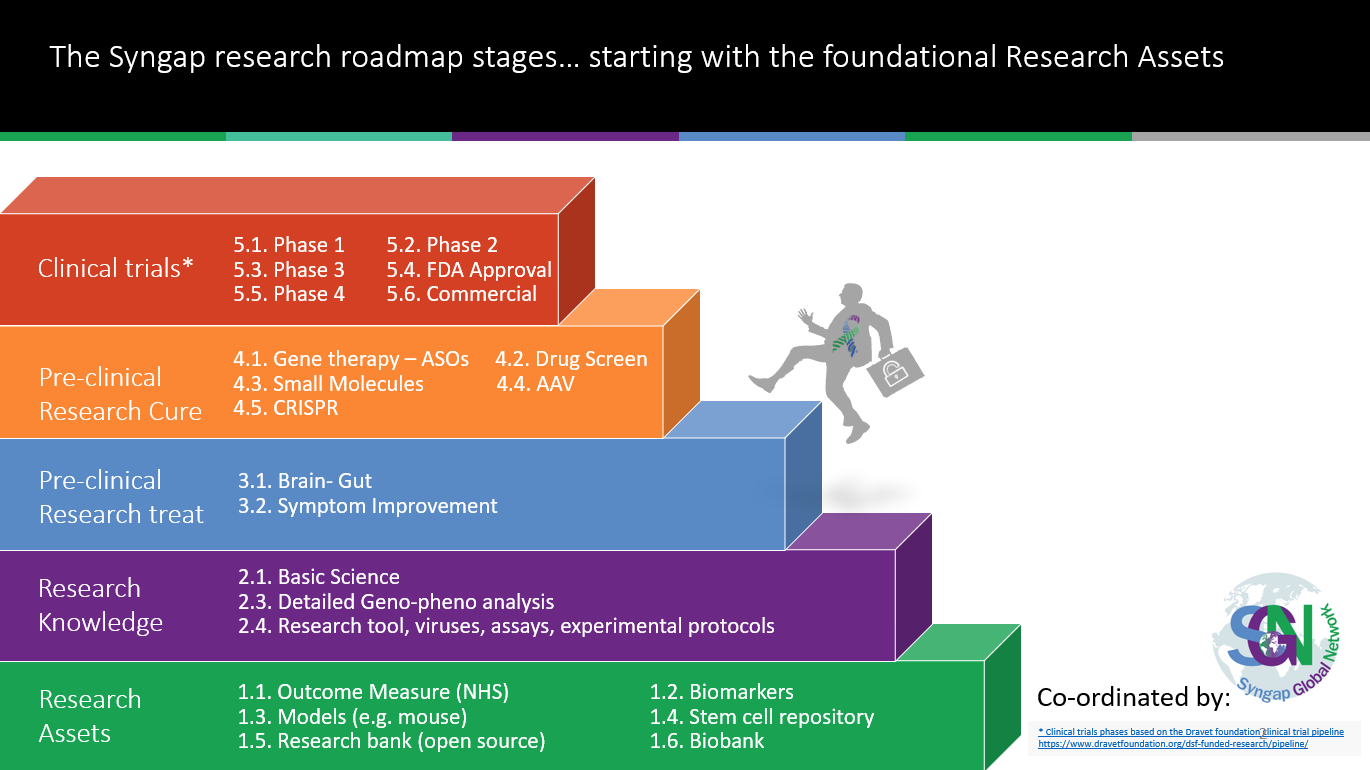
Syngap Research
Syngap is gaining interest with astute researchers around the world, because:
Surprisingly common - Syngap is the 2nd most common single-gene determinant of autism (Michaud research) so the current patient population meaningfully under-represents totals;
Targetable mutations - Most mutations are targetable through ASOs and Syngap has favourable binding properties;
Haploinsufficient - It is a haploinsufficiency so insights on SynGAP may help identify insights on other haploinsuffiiciencies (or insights from other haploinsufficiencies could aid SynGAP research (i.e., Dravet);
Syngap is a severe childhood epilepsy - It is severe so societal consequences / funding to reduce societal consequences should be high (especially in single payer systems);
Cracking Syngap will have impacts beyond the Syngap community - Syngap absorption and production is related to schizophrenia, Alzheimer’s, dementia and many other neurological conditions, insights here could help broader populations;
Established infrastructure - The infrastructure for successful clinical trials either exist or are being established for Syngap, biomarkers and natural history study including access to a network of engaged clinicians and patients
We are a well-organized & passionate community who would do anything to help our kids.
Major Syngap publications:
Read about how the Syngap research published in the Neurology journal began, with a few Syngap parents working together.
From some Syngap parents: https://medium.com/@syngapfund/syngap-patient-neurology-paper-five-things-parents-need-to-know-7910e6b95ce2
Professor Ingrid Scheffer: https://www.ncbi.nlm.nih.gov/pmc/articles/PMC6340340/
Genetic and neurodevelopmental spectrum of SYNGAP1-associated intellectual disability and epilepsy (Mignot, 2016): https://jmg.bmj.com/content/53/8/511.long
Mick Parker, university of Edinburgh, 2020: https://www.research.ed.ac.uk/portal/files/21176907/De_novo_heterozygous_loss_of_function_mutations_in_SYNGAP1_cause_a_syndromic_form_of_intellectual_disability.pdf
Clements: https://www.frontiersin.org/articles/10.3389/fncel.2016.00032/full
This link is to all of Huganir's publications: http://neuroscience.bs.jhmi.edu/huganir/publications.html
This link is to all of Rumbaugh's publications: http://rumbaugh.florida.scripps.edu/publications/
Syngap mutation information:
http://varnomen.hgvs.org/bg-material/refseq/#DNAc to translate what you have in your report.
http://www.ncbi.nlm.nih.gov/clinvar for published/reported mutations
Pathogenic SYNGAP1 Mutations Impair Cognitive Development by Disrupting Maturation of Dendritic Spine Synapses.
Mutations in Syngap1 represent one of the most common monogenic forms of Intellectual Disability https://www.frontiersin.org/articles/10.3389/fnins.2016.00192/full
Pubmed is a great resource, you can search for research using keywords. For example, here is the search on Syngap1. https://www.ncbi.nlm.nih.gov/07pubmed/?term=syngap1
Syngap Global Network Research Roadmap
The families involved in Syngap Global Network have collaborated to develop a Syngap Research Roadmap to ensure our resources are aligned, focused, coordinated and not duplicated.




